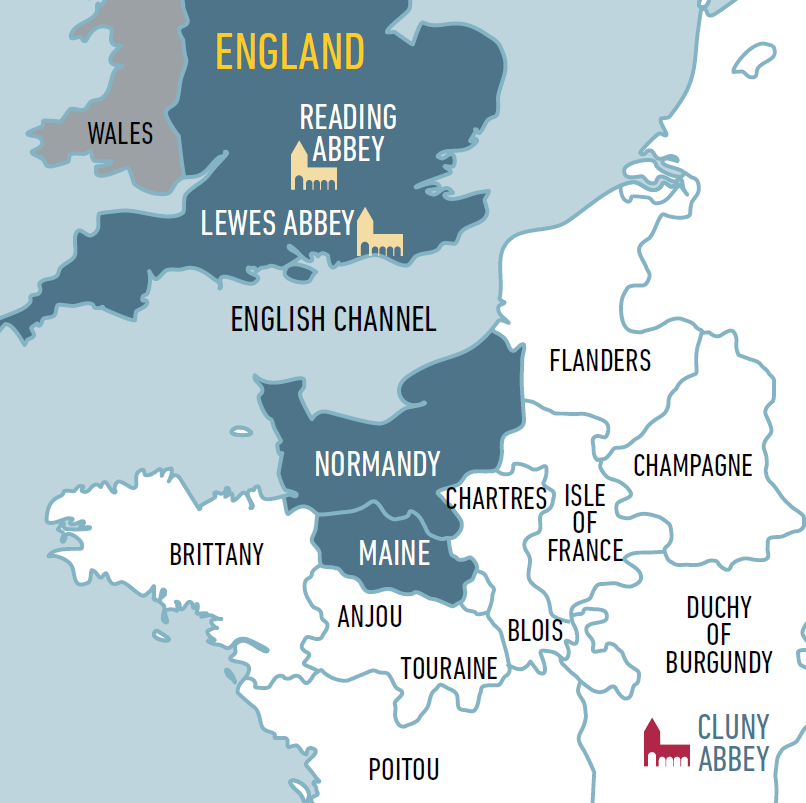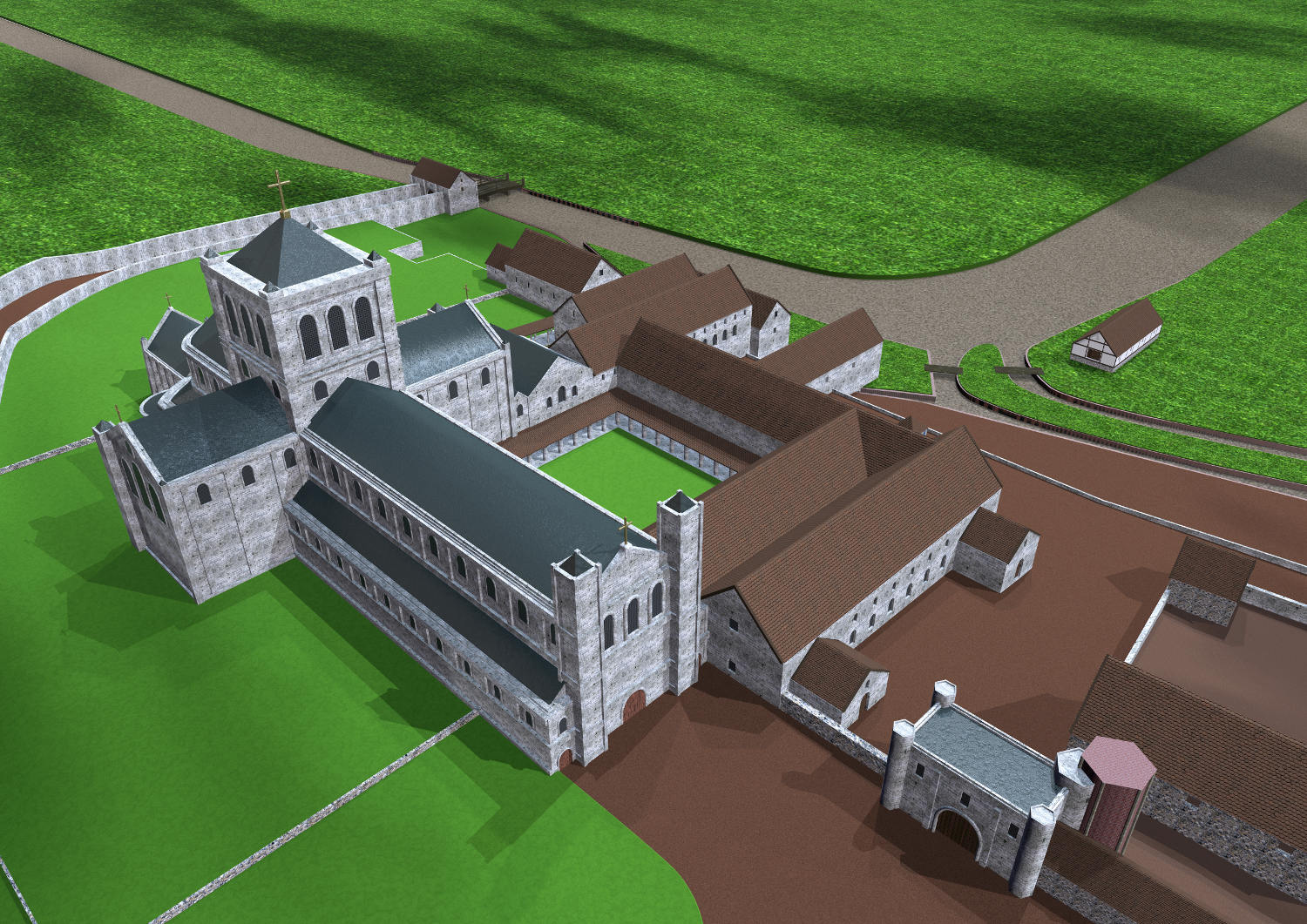After the Battle of Hastings
After the Battle of Hastings, William still had to conquer England. He marched from Hastings, crossing the Thames at Wallingford, and then on towards London. At Berkhamsted he received the surrender of the city. William took hostages to ensure that the surrender was kept.
William wanted to be crowned King as soon as possible. His coronation took place on Christmas Day, 1066. It was held at Westminster Abbey, which had been built by Edward the Confessor. During the Coronation, as the people inside the Abbey shouted out their acceptance of William, the troops outside thought a fight had broken out. Fearing that William had been attacked, they began to set fire to Saxon houses. As the Norman soldiers could not understand the language of the Saxons, and the Saxons could not understand the language of the Normans, it was difficult for them to communicate.
The Feudal System
William kept the promises he had made to the barons who fought with him to give them English land. He gave them lands taken from the Saxons. In exchange, the barons had to be loyal to William and provide knights to fight for him when he needed them. They might also have to pay sums of money to the king. William made sure that the barons could not easily rise against him by giving them pieces of land in different parts of the country, which made it difficult to raise a private army in secret.
In their turn the barons granted land to their followers. The knights promised in return to be loyal to the barons, to fight for them when needed and to raise money when the barons demanded it.
The peasants had to work the land for the knights at certain times of the year, and pay the knights in produce which kept the knights' families supplied with food. Peasants were not usually allowed to leave their own villages. Every person owed his or her living to the people who had allowed them their land and was paid in service, money or goods. It was called the FEUDAL SYSTEM, and was the basis of society in the early middle ages.

Reading Abbey was founded by Henry I by monks from Cluny in France
The Church
William also gave lands to the Church because the Pope had supported William in his claim to the English throne. One of the first promises William kept was to build an abbey to celebrate his victory. He chose the site of the Battle of Hastings and the abbey became known as Battle Abbey. It is said that the high altar was built at the place where King Harold lost his life. In 1071 William gave the land of the former Saxon nunnery at Reading to Battle Abbey, these were in west Reading and is now remembered in Battle Ward, Library, and School. In 1121 these lands were transferred to the newly founded Reading Abbey by Henry I (see The Norman Succession below).
William wanted to raise money in his new kingdom, so he made the Saxons pay taxes. In 1086 he ordered a survey and his men went all over the country writing down exactly what everyone owned in land, cattle, crops and tools so that he knew exactly how much people could pay. When all the information had been collected, it was written down and is known as the Domesday Book.

A bird's eye reconstruction of Reading Abbey, one of the largest Norman buildings in Britain
Romanesque architecture
Life gradually returned to normal. Ordinary people lived in wooden buildings and these gradually rotted away, so that we cannot see exactly what they looked like. However, the barons wanted more permanent buildings than the hastily built timber castles put up soon after the Battle of Hastings. Soon castles, churches, cathedrals, abbeys and monasteries were being built in stone. Some of the stone was brought across from Caen in France. The Normans brought their own style of building and decorating with them too. Some of their castles and cathedrals took a very long time to build, but we can still see many of them today. The style of the building at that time is called ROMANESQUE.

A Romanesque capital from the cloister of Reading Abbey
Languages
We should remember that William the Conqueror was not only King of England, he also ruled Normandy and he spent a lot of time there. Barons and knights in England spoke French for many years, and most writing was in Latin or French. The ordinary people spoke in their own Saxon language, and the Chroniclers continued to write in it until the reign of William's grandson Henry II.
The Norman Succession
William of Normandy became King of England in 1066. He died in Rouen in 1087, and was buried at Caen. He left four children: Robert, William, Henry and Adela.
The eldest, Duke Robert, ruled in Normandy and his second son William became King William II of England, known as Rufus because of his red complexion. Rufus was not a popular king. He was killed by an arrow in 1100 when hunting in the New Forest and he may have been murdered. Rufus did not marry and had no children to succeed him. His brother Henry took the throne, but Robert of Normandy also claimed it. Eventually Henry imprisoned Robert who died in Cardiff Castle.
Henry I had two legitimate children, a son and a daughter. His son was drowned on the White Ship while crossing the English Channel. Possibly the loss of this son moved Henry to found the Reading Abbey in 1121. When Henry died in 1135 he was buried in Reading, before the high altar of his abbey.
Henry had named his daughter Matilda, who was married to Geoffrey Plantagenet of Anjou, as his successor and the barons had sworn that they would accept her as sovereign. On Henry's death, Stephen, son of William the Conqueror's daughter Adela, seized the throne and from 1139 until 1153 civil war raged in England. In 1153 the Treaty of Wallingford established that Stephen would become king but Matilda's son Henry would succeed him on his death. Stephen died a year later and Henry took the throne as Henry II, the first of fourteen Plantagenet Kings.






